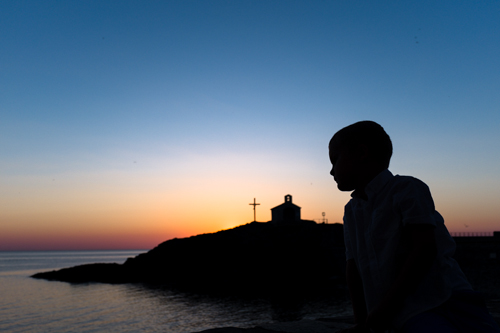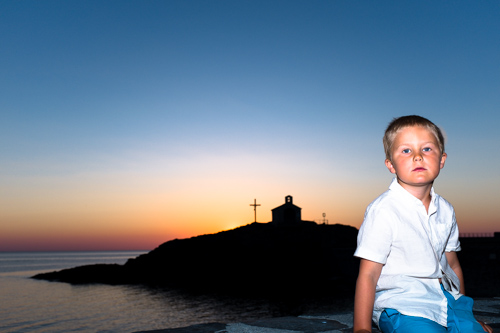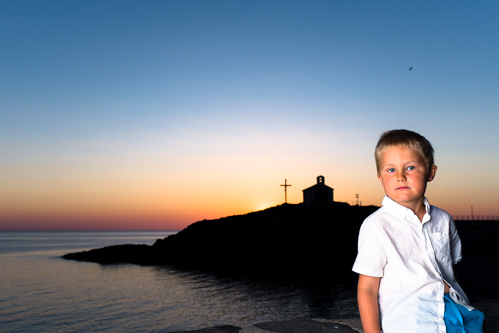
Three weeks of our summer vacation we spent in the small town of Collioure in France, and with kids that like to get up early, I saw a lot of fantastic sunrises. A bakery was also a part of that equation, and they tend to open when most people still sleep.
Taking photos of sunrises is one thing, and that can quite easily be done without any fancy equipment, camera stands or lights. But, when you want to include, let’s say, your son in that sunrise photo, some kind of light needs to be added.
On this vacation, I had only packed my Fuji X100s and one Nikon Speedlight SB-800. The flash extension cord stayed for the most of the duration in my bag. The built-in flash in the Fuji is quite good, I think, but it just gives you light from one fixed direction, on-axis with the camera and a little bit too low.

On-camera, on-axis flash and sunrise
This is how it looks when you switch to manual (ISO 200, f/4 and 1/1000s). I can’t really remember what effect I used on the SB-800. It takes the boy from a silhouette to something you can see, but it looks a bit like a montage. Something you might have done in Photoshop.
I want the sky deep blue with the sunrise peeking up, and therefore I get a very black landmass so I can’t really mix ambient with flash more without losing the sunrise. With just one flash on the camera, you can only do so much.

Up against the wall
Luckily, there was a yellow-ish wall right next to use, camera left. And with just turning the Speedlight so it was pointed against the wall instead of straight forward, I got a big bounced light. The yellow tone of the wall helps a bit with adding warmth to the scene without having to use gels.
I use this Strobist technique a lot with available light, letting light into the shadow where I like to put my models, just place them near a light toned wall and you get something interesting. Using the same idea but with Speedlights makes your lightsource bigger and softer which in many ways also makes it look more natural. You can easily change the look of the light by changing your distance to the wall, or the angle of the light.
Thanks for visiting this blog, if you like this post, please share it anyway you want. Any question will be answered and comments are greatly appreciated, either here or on my Facebook page. Or just press Like. Thanks again.